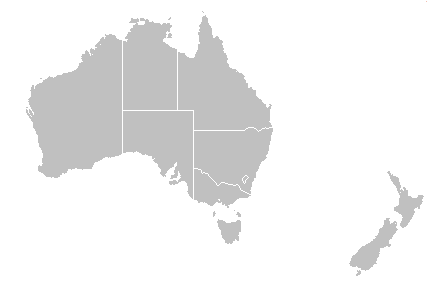User:Billingd/maps
Playing around with maps
Wikipedia resources
[edit]Some wikipedia resources:
- Wikipedia:WikiProject Maps
- Wikipedia:Graphics_Lab/Map_workshop
- Wikipedia_talk:WikiProject_Maps
- Commons:Commons:Graphic_Lab/Map_workshop
- Commons:User:NordNordWest
Projections for Australian maps
[edit]According to the Australian Intergovernmental Committee on Surveying and Mapping (ICSM) here:
The Lambert Conformal Conic is the preferred projection for regional maps in mid-latitudes. In Australia the national mapping agency prefers to use this projection using 18° and 36° South as the two Standard Parallels. Projection information: Lambert Conformal Conic; centred on 140° East and 25° South, and two Standard Parallels 18° and 36° South.
Cosgrove track
[edit]The Cosgrove volcano hotspot track is a theorized chain of volcanoes through eastern Australia.[1][2]
I want to create an image like this. Coordinate data from Davies[1], Extended Data Table 1
Template:Location map+ places one or more location marks on a map, with optional labels. One of the examples is a map of Australia using Module:Location map/data/Australia with base map image Commons:File:Australia_location_map.svg.
OK. Looks OK for a start
Maps with overlays
[edit]Looking for examples of maps with overlays:
- Kidepo Valley National Park has an svg overlay.
- map is in a Template:Infobox protected area
- location template is Module:Location map/data/Uganda
- The base map is Commons:File:Uganda_location_map.svg
- the overlay is Commons:File:Kidepo_in_Uganda_location_map_overlay.svg
- Template:Superimpose may be what I want
Play with Uganda example
and with image_overlay added
Tasmantid Seamount Chain
[edit]Maps and tables for Tasmantid Seamount Chain.[3][4][5][6]
Coordinates from GEBCO Undersea Feature Names [1].
Some info on Mellish Reef here [2].
Another base map is Commons:File:Australasia_and_South_Pacific_locator_map.svg
Here are some Commons:location markers
First attempt at overlay is Commons:File:Tasmantid seamount track overlay.svg
Location map+ | Australia and New Zealand
[edit]How accurate are locations on Module:Location map/data/Australia and New Zealand using Template:Location map+ ? Very wrong!! Cape Howe and Point Danger are the locations where the state borders meet the coast. Errors are approximately 200 km.
Asked about this at Wikipedia_talk:WikiProject_Maps#Location_map_of_Australia_and_New_Zealand
Also requested a new map at Wikipedia:Graphics_Lab/Map_workshop
References
[edit]- ^ a b Davies, D. Rhodri; Rawlinson, N.; Iaffaldano, G.; Campbell, I. H. (Sep 2015). "Lithospheric controls on magma composition along Earth's longest continental hotspot track". Nature. 525: 511–514. doi:10.1038/nature14903.
- ^ Gary, Stuart (2015-09-15). "World's longest continental volcanic chain, the Cosgrove hotspot track, discovered in Australia". ABC News. Australian Broadcasting Corporation.
- ^ Richards, F. D.; Kalnins, L. M.; Watts, A. B.; Cohen, B. E.; Beaman, R. J. (October 2018). "The Morphology of the Tasmantid Seamounts: Interactions Between Tectonic Inheritance and Magmatic Evolution" (PDF). Geochemistry, Geophysics, Geosystems. 19 (10): 3870–3891. doi:10.1029/2018GC007821.
- ^ a b Seton, Maria; Williams, Simon; Mortimer, Nick; Meffre, Sebastien; Micklethwaite, Steven; Zahirovic, Sabin (2019-01-22). "Magma production along the Lord Howe Seamount Chain, northern Zealandia". Geological Magazine. 156 (9): 1605–1617. doi:10.1017/S0016756818000912. ISSN 0016-7568.
- ^ a b c d e f g h i j Crossingham, Tracey J.; Vasconcelos, Paulo M.; Cunningham, Toby; Knesel, Kurt M. (Sep 2019). "40Ar/39Ar geochronology and volume estimates of the Tasmantid Seamounts: Support for a change in the motion of the Australian plate". Journal of Volcanology and Geothermal Research. 343: 95–108. doi:10.1016/j.jvolgeores.2017.06.014.
- ^ a b McDougall, Ian; Duncan, Robert A. (1988). "Age progressive volcanism in the Tasmantid Seamounts". Earth and Planetary Science Letters. 98: 207–220. doi:10.1016/0012-821X(88)90173-2.






